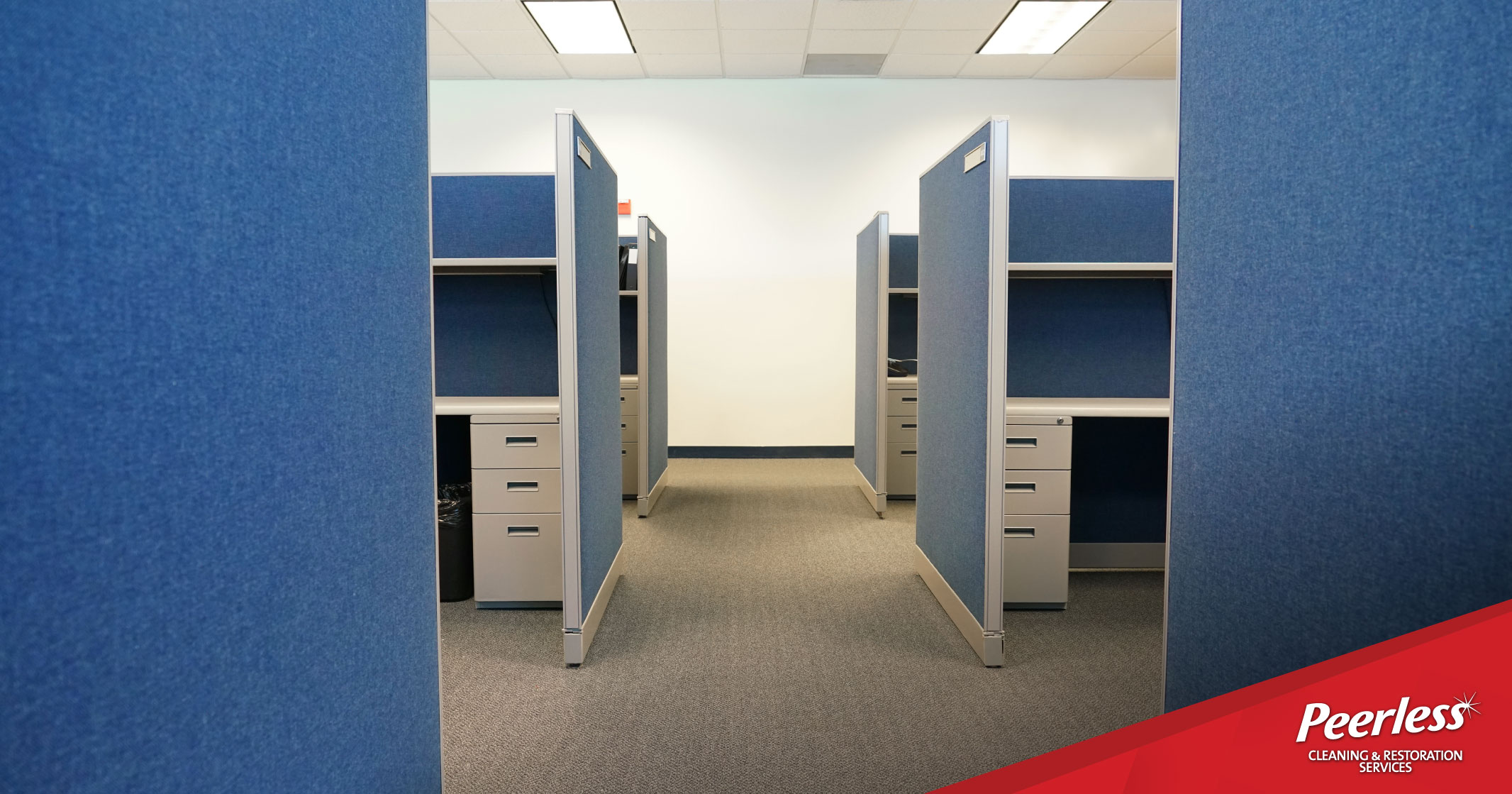Office Cubicle Cleaning
Keep Your Workspace Healthy and Fresh
Office cubicles are a smart and efficient way to maximize workspace, but they also come with a downside, they attract dust, dirt, and germs. Because of their fabric walls and tucked-away corners, cubicles can become hidden hotspots for bacteria, allergens, and grime. Regular cleaning is essential not only for appearances but also for the health and productivity of your team.
In this article, we’ll break down why cubicle cleaning matters, how often it should be done, and practical DIY steps you can take between professional cleanings.
Why Regular Cubicle Cleaning Matters
A clean cubicle isn’t just about tidiness, it’s about health and productivity. Dust and allergens trapped in cubicle fabric can contribute to respiratory issues, allergies, and the spread of germs, especially in shared spaces. Regular cleaning boosts office morale, enhances the look of your workspace, and promotes a healthier environment.
How often should cubicles be cleaned?
At a minimum, cubicle partitions should be professionally cleaned every three to four months. In high-traffic offices, pet-friendly workplaces, or allergy-sensitive environments, monthly cleanings are a smart investment.
DIY Cubicle Cleaning: Step-by-Step
While professional deep cleaning is essential, here’s a simple DIY routine to keep your cubicle fresh between service appointments:
Step 1: Clear the Clutter
Remove papers, photos, push pins, and personal items from the cubicle walls. It’s also a great time to organize and reduce paper clutter on your desk.
Step 2: Make Room to Work
Pull chairs, file cabinets, and any other obstacles away from the walls so you can easily access all surfaces.
Step 3: Dust Thoroughly
Use a microfiber cloth or a handheld vacuum with a brush attachment to remove dust from the fabric walls, desk surfaces, and corners. Don’t forget the baseboards and metal frames!
Step 4: Treat Stains
For fabric walls, mix a mild solution of laundry detergent and warm water. Dip only the suds (not the liquid) onto a soft brush or sponge, and gently scrub the wall in circular motions. Always test a hidden spot first. For stubborn stains, a baking soda paste or a small amount of white vinegar can help.
Step 5: Wipe Down Hard Surfaces
Use an all-purpose cleaner on desk surfaces, phone handsets, drawer handles, and other touchpoints. Wipe with a damp cloth, then dry.
Step 6: Let it Dry
Ensure cubicle walls dry completely by placing small fans nearby or allowing time before moving items back.
Why Professional Cubicle Cleaning Matters
While DIY efforts help, professional cleaning provides a deeper level of sanitation, including:
- Thorough removal of dust and allergens
- Fabric-safe cleaning for partitions
- Sanitization of high-touch surfaces
- Special care for delicate materials and finishes
When you have dozens of cubicles, calling in the pros saves time and ensures consistent, safe results.
A Clean Working Environment
A clean cubicle keeps your employees healthier, happier, and more productive. By combining regular professional cleaning with simple DIY upkeep, you can create a workspace that looks great and supports well-being.
If you’re ready to elevate the cleanliness of your office, contact Peerless for a professional quote, and experience the difference that exceptional service makes.




